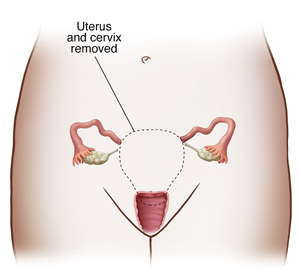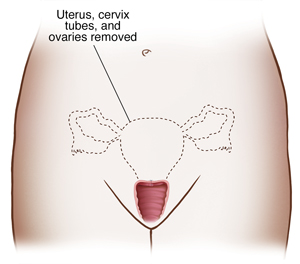There are several types of laparoscopic hysterectomy. Depending on your needs, all or part of the uterus may be removed. In some cases, the cervix, ovaries, or fallopian tubes are also removed. Your surgeon will discuss the choices with you before surgery.
Total hysterectomy
A total hysterectomy means that the entire uterus is removed. It may be removed through the vagina. Or it may be removed in pieces through small cuts (incisions) in the belly (abdomen).
Hysterectomy with removal of ovaries
In this procedure, the uterus, ovaries, and fallopian tubes are removed. The organs may be removed through the vagina. Or they may be removed in pieces through small cuts in the belly.
Laparoscopic supracervical hysterectomy (LSH)
With this procedure, the top part of the uterus is removed. The cervix is left in place and may be closed at the top. This procedure may be done if the cervix is healthy. The uterus is removed in pieces through small cuts in the belly. The ovaries and tubes may also be removed during this type of hysterectomy.
Featured in




